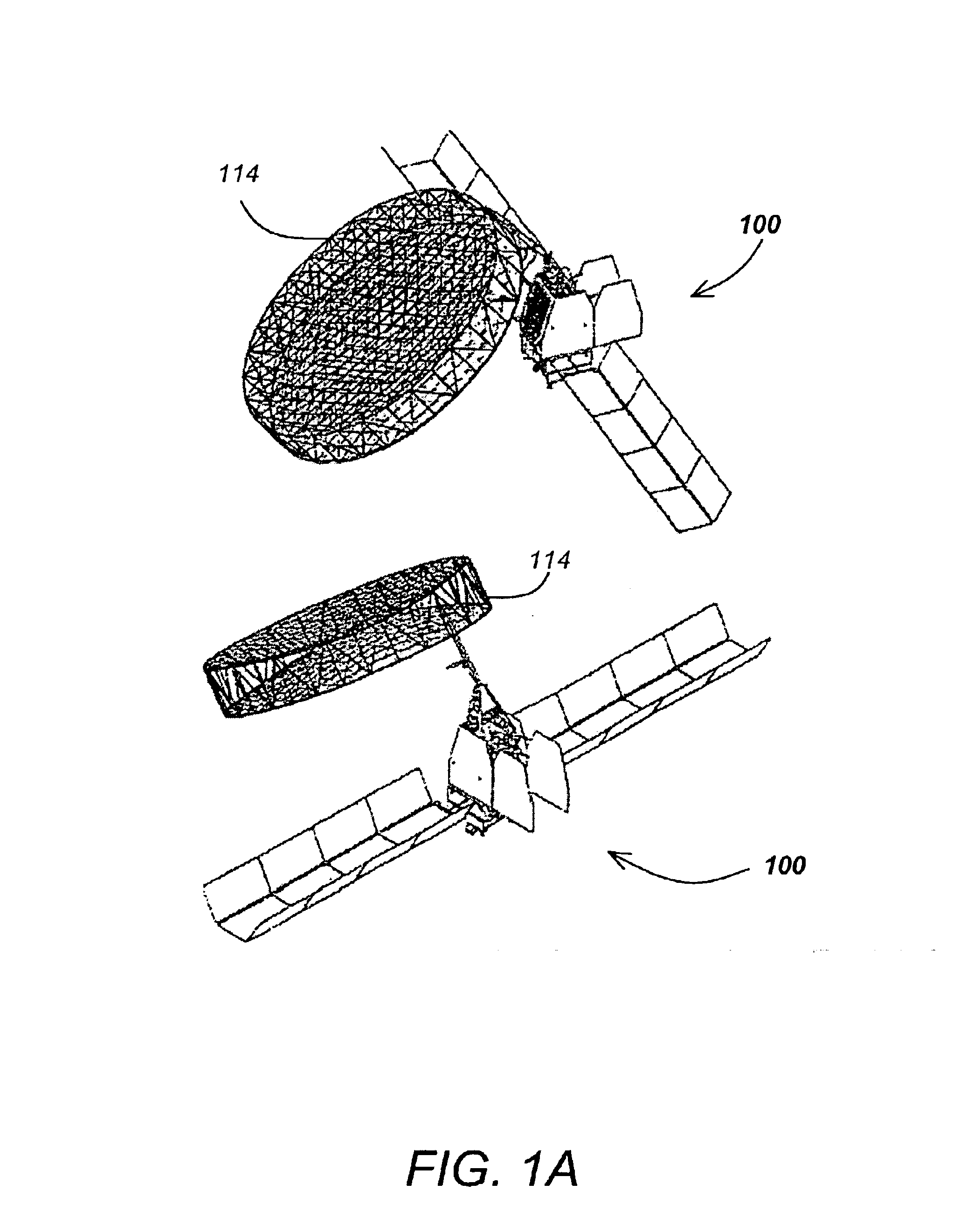Method and apparatus for reaction wheel dynamic compensation in long-duration deployment of a large reflector
- Summary
- Abstract
- Description
- Claims
- Application Information
AI Technical Summary
Benefits of technology
Problems solved by technology
Method used
Image
Examples
Embodiment Construction
[0032]In the following description, reference is made to the accompanying drawings which form a part hereof, and which is shown, by way of illustration, several embodiments of the present invention. It is understood that other embodiments may be utilized and structural changes may be made without departing from the scope of the present invention.
[0033]FIGS. 1A and 1B illustrate a three-axis stabilized satellite or spacecraft 100. FIG. 1A illustrates an appendage 114 in a deployed position, while FIG. 1B illustrates the appendage 114 in a stowed position. The satellite 100 has a main body 102, a pair of solar wings or panels 104N and 104S. The satellite 100 may also have a number of instruments and sensors such as one or more high gain narrow beam antennas 106, a telemetry and command omni-directional antenna which is aimed at a control ground station, a boom-mounted magnetometer, or an optical imager that is aimed at various ground targets.
[0034]The satellite 100 may also include on...
PUM
 Login to View More
Login to View More Abstract
Description
Claims
Application Information
 Login to View More
Login to View More - R&D
- Intellectual Property
- Life Sciences
- Materials
- Tech Scout
- Unparalleled Data Quality
- Higher Quality Content
- 60% Fewer Hallucinations
Browse by: Latest US Patents, China's latest patents, Technical Efficacy Thesaurus, Application Domain, Technology Topic, Popular Technical Reports.
© 2025 PatSnap. All rights reserved.Legal|Privacy policy|Modern Slavery Act Transparency Statement|Sitemap|About US| Contact US: help@patsnap.com



